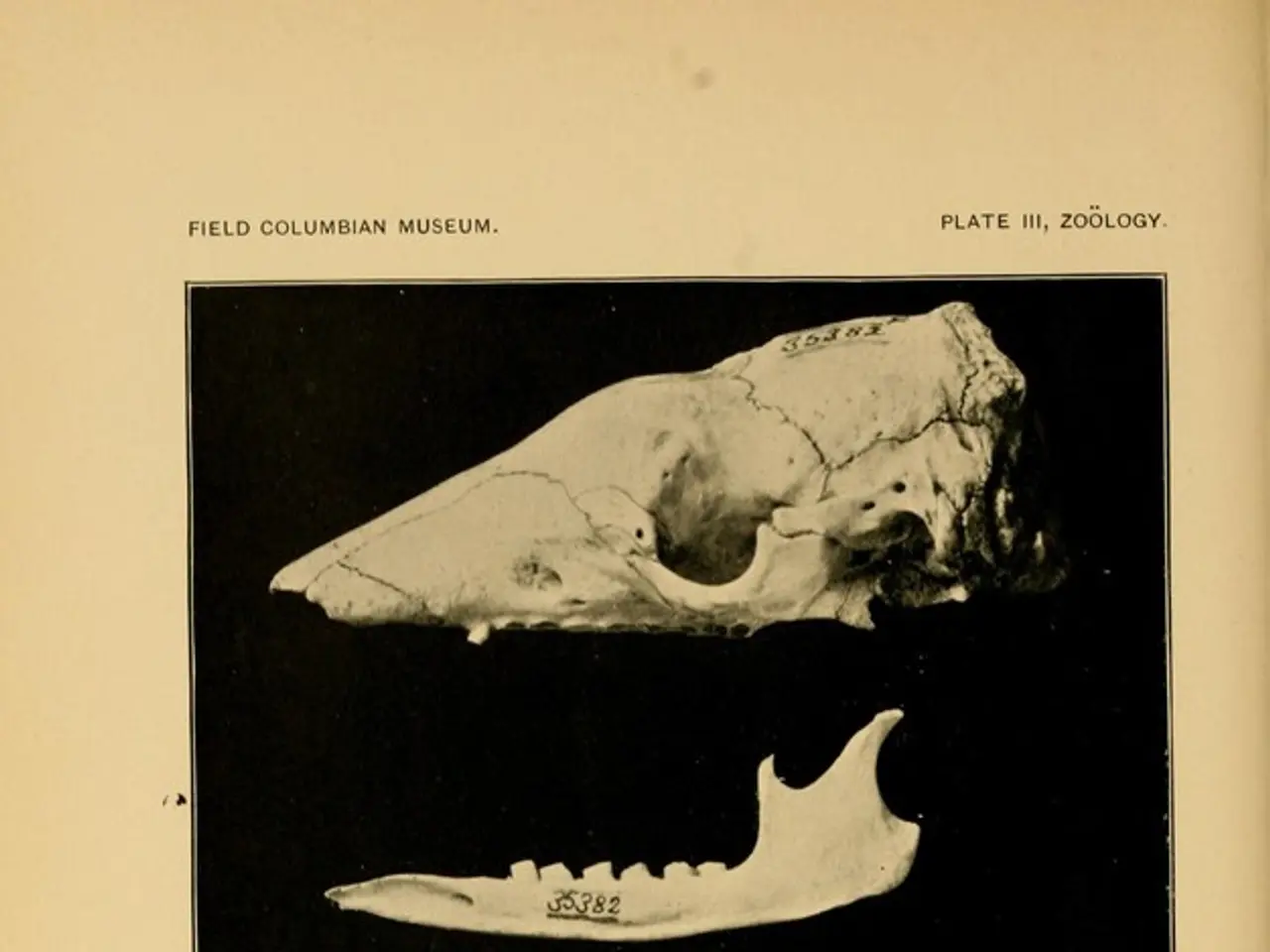Measures for Minimizing the Risk of Osteoporosis
Osteoporosis, a bone condition that leads to a reduction in bone strength and an increased risk of broken bones, affects millions of people worldwide. In the United States, it is estimated that about 1 in 3 women and 1 in 5 men age 50 and over have osteoporosis, with a higher incidence in females than males [6].
Dietary Changes
A balanced diet plays a crucial role in maintaining bone health. Ensuring adequate consumption of calcium and vitamin D, which are essential for strong bones, is paramount. Good sources of calcium include dairy products like milk, yogurt, and cheese, as well as fortified products, almonds, tofu, and leafy greens [1][2][5]. Vitamin D, which helps the body absorb calcium and prevent osteoporosis, can be found in sunlight, fatty fish, and fortified foods [2].
Protein is another essential nutrient for bone health. Adequate protein helps preserve bone mass with aging, and doctors may suggest a protein intake greater than 0.8 grams/kilograms per body weight for older adults with osteoporosis [1][2]. Foods high in protein include poultry, fish, eggs, lentils, nuts, and seeds.
In addition, including at least five servings of fruits and vegetables daily provides essential vitamins and minerals for bone health [2]. Minerals like magnesium, phosphorus, and potassium can be found in nuts, seeds, and whole grains [4].
Exercise Strategies
Weight-bearing exercises are the most important form of exercise in preventing osteoporosis. These activities, such as walking, hiking, climbing stairs, dancing, and running, work against gravity and help strengthen bones [1][3]. Muscle-strengthening activities like lifting weights or using resistance bands also improve bone density and balance [1][3].
Exercises that improve balance and flexibility, such as tai chi or yoga, can help prevent falls and fractures. It's important to consult with a healthcare provider before starting any exercise regimen if you have osteoporosis [1][3].
Lifestyle Modifications
Avoiding smoking is crucial for maintaining bone health. Smoking is a significant contributor to osteoporosis and decreases bone formation, potentially slowing the healing of fractures [3][4]. Quitting smoking may help reduce the risk of osteoporosis.
Moderate alcohol consumption is also recommended. Consuming more than one drink for women and two for men can increase the risk of weak bones [4][5]. Fall prevention is also essential. Modifying your home environment to reduce tripping hazards and engaging in exercises that improve balance and strength can help prevent falls [5].
Preventing and managing osteoporosis involves a combination of dietary changes, regular exercise, and lifestyle modifications. By integrating these strategies, you can effectively contribute to preventing and managing osteoporosis.
Medical Treatments
The Food and Drug Administration (FDA) has approved several medications for the treatment and prevention of osteoporosis, including bisphosphonates, estrogen agonist/antagonists, calcitonin, estrogen and hormone replacement therapy (HRT), parathyroid hormone analogs and parathyroid hormone related-protein analogs, RANK ligand inhibitors, monoclonal antibodies, and romosozumab [7].
It's important to note that certain medical conditions, such as rheumatoid arthritis and hyperthyroidism, may increase the risk of developing osteoporosis [8]. Regular bone health assessments, such as a bone density test, can help diagnose osteoporosis or osteopenia, a condition characterized by low bone mass [9].
By taking proactive steps to maintain bone health, you can significantly reduce your risk of developing osteoporosis and enjoy a healthier, more active lifestyle.
[1] National Osteoporosis Foundation. (2021). Diet and Nutrition. Retrieved from https://www.nof.org/patients/treatment/diet-nutrition/
[2] National Institutes of Health. (2021). Calcium and Vitamin D. Retrieved from https://ods.od.nih.gov/factsheets/Calcium-HealthProfessional/
[3] National Institutes of Health. (2021). Bone Health: Preventing Osteoporosis. Retrieved from https://www.bones.nih.gov/health-info/bone/bone-health/prevention-of-osteoporosis
[4] National Institutes of Health. (2021). Alcohol and Your Bones. Retrieved from https://www.bones.nih.gov/health-info/bone/bone-health/alcohol-and-your-bones
[5] National Institutes of Health. (2021). Preventing Falls. Retrieved from https://www.bones.nih.gov/health-info/bone/bone-health/prevention-falls
[6] National Osteoporosis Foundation. (2021). Osteoporosis Facts and Statistics. Retrieved from https://www.nof.org/patients/facts-and-statistics/
[7] Food and Drug Administration. (2021). Osteoporosis Drugs. Retrieved from https://www.fda.gov/drugs/information-drug-class/osteoporosis-drugs
[8] National Osteoporosis Foundation. (2021). Medical Conditions That Increase the Risk of Osteoporosis. Retrieved from https://www.nof.org/patients/treatment/medical-conditions-that-increase-the-risk-of-osteoporosis/
[9] National Osteoporosis Foundation. (2021). Bone Density Test. Retrieved from https://www.nof.org/patients/diagnosis-testing/bone-density-test/
- Incorporating vitamins like D, essential for strong bones, and calcium, key for bone health, into one's diet is crucial.
- Good sources of calcium include dairy products, fortified products, almonds, tofu, and leafy greens.
- Regular exercise, particularly weight-bearing activities and muscle-strengthening routines, can enhance bone density and reduce the risk of fractures.
- Balance and flexibility exercises, such as tai chi or yoga, can help prevent falls and fractures.
- Smoking contributes significantly to osteoporosis and should be avoided to maintain bone health.
- Moderate alcohol consumption is recommended to minimize the risk of weak bones.
- Therapies and treatments approved by the FDA for osteoporosis include bisphosphonates, RANK ligand inhibitors, and parathyroid hormone analogs, among others.
- Certain medical conditions, including rheumatoid arthritis and hyperthyroidism, may increase the risk of developing osteoporosis.
- Regular assessments like bone density tests can help diagnose osteoporosis or osteopenia and provide an opportunity for proactive management.




